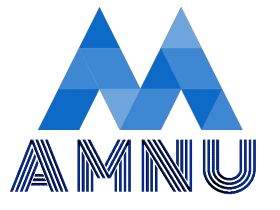
Understanding SharePoint Extranet best practices is essential to getting the best out of your SharePoint usage. A SharePoint Extranet is an ideal way to keep your clients up to date with the latest information about your work and services. SharePoint makes this easy, as it allows for the integration of data from most Microsoft applications.
Amnu offers expert SharePoint services that can revolutionise your extranet usage. Whether it’s expert consultancy or remote SharePoint support, here at Amnu, we can provide specialist advice that will take your use of SharePoint to a whole new level. Until then, our professional team has picked out their top SharePoint Extranet best practices.
Understand the limitations of SharePoint
This one might seem obvious, but unless you know exactly what you can and cannot do within your SharePoint extranet, you can end up wasting time searching for things that aren’t there. As SharePoint interfaces with all your other Microsoft products, you can use it to search for documents and files that are pertinent to your business. You should always ensure your team understands which applications are connected to SharePoint.
Name your files appropriately
If your clients and team members are going to get the best out of their SharePoint experience, you need to ensure that all your files are named appropriately. If you are using disorganised or obscure file names, it becomes difficult to successfully search for them. As SharePoint can pull information from various applications, there are a lot of files available to you. Without appropriate file names, you will struggle to find what you’re looking for.
Use tags to make searching easier
Another way to make searching for information easier and more intuitive is to use tags when creating and storing documents. These tags break down your documents into categories. You can then filter your document search to only pull through files with the appropriate tag attached to them. For more tips on SharePoint document management, contact the expert Amnu team today.
Automate your metadata
While we’re on the subject of document tagging, you can also set up automatic metadata tagging within SharePoint. If you have a large number of documents that all need to be filed under the same tag, automated metadata tagging is the quickest and easiest way to do it. The SharePoint migration tool allows you to set up this useful automation as part of your migration process.
Know how to restore documents
If you are using SharePoint to store large amounts of vital information, it is essential that you know how to restore and recover documents in case you experience a disaster. Fortunately, there are features within SharePoint that can back up your information and facilitate information recovery. If you are struggling to recover lost SharePoint data, contact the expert team at Amnu today.
Set up personal library views
There might be specific types of files and information that you need to view on a daily basis. Alternatively, your job might require you to move back and forth between one or more lists. This can be time-consuming, as you have to input your search terms and parameters every time. However, SharePoint allows you to save personal library views and quickly transition between them and save time every day.
Understand document locking
SharePoint allows your staff to collaborate on shared documents. This can be incredibly convenient for your workflow and productivity. However, you may have organisational information and documents stored in SharePoint that contain vital information that needs to remain consistent. In this situation, you will need to lock your documents and announcements so that others cannot edit them.
Establish workflow approvals
Managing documents in SharePoint becomes much easier when you establish workflow approval protocols. If you need someone else to sign off on your documents before they are uploaded to your SharePoint library, you can do so with ease. All you need to do is select the file that you would like to be approved, select it, click “automate” and choose “request sign off”. You can establish more complicated approval workflows if necessary.

